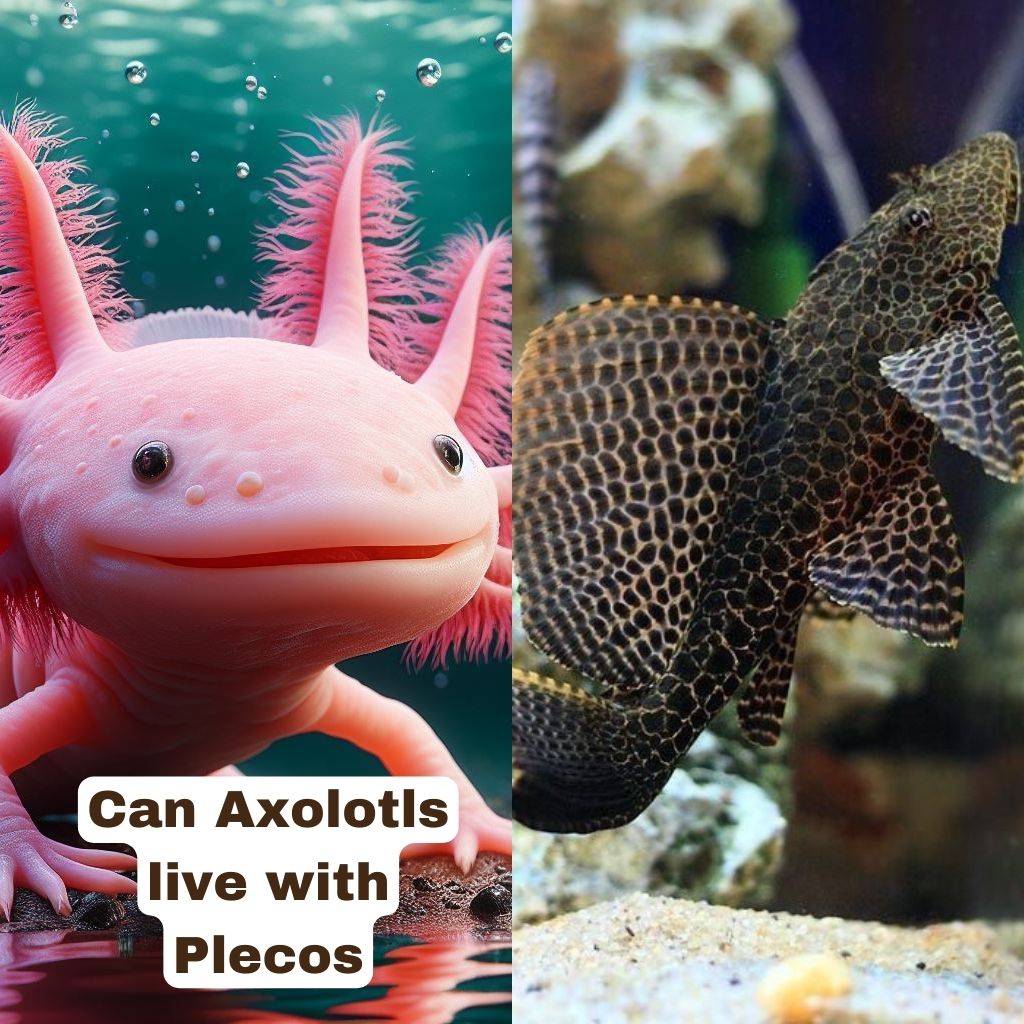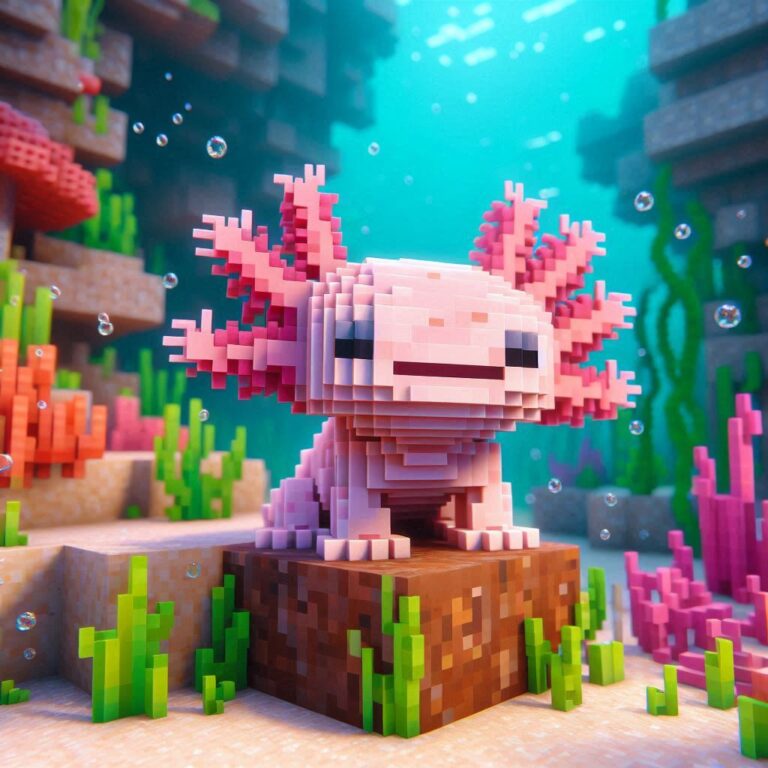
The cohabitation of axolotls and plecos in the same tank is a subject of debate among aquarium enthusiasts. While it is technically possible to house them together, it’s not generally recommended due to their differing habitat requirements and behavioral tendencies. Axolotls, amphibians native to Mexico, thrive in cool, clean water with specific pH levels and ample hiding spots. Plecos, on the other hand, are freshwater fish known for their algae-eating habits and often require warmer water temperatures. Moreover, plecos can sometimes exhibit territorial or aggressive behavior, posing a potential threat to the more passive axolotls. Thus, careful consideration and diligent monitoring of tank conditions are crucial if attempting to house these two species together.
Habitat Requirements: Axolotls vs. Plecos
Axolotls and plecos hail from vastly different natural habitats, each with its own set of requirements for optimal health and well-being. Axolotls, native to the freshwater lakes of Mexico, are adapted to cool, clean water with minimal current. They thrive in temperatures between 60-68°F and prefer a neutral pH around 7.0. In contrast, plecos, originating from the rivers and streams of South America, are accustomed to warmer water temperatures ranging from 72-82°F and slightly acidic to neutral pH levels. This stark contrast in environmental preferences underscores the challenge of cohabitating these species in the same tank. Finding a middle ground in terms of water temperature and pH can be tricky, requiring careful monitoring and potentially separate tank setups for each species.
Tank Size and Setup
Proper tank size and setup are crucial factors in ensuring the well-being of both axolotls and plecos. Axolotls are relatively large amphibians that require ample space to swim and explore, with a minimum tank size of 20 gallons per axolotl. They also benefit from a tank setup that includes plenty of hiding spots, such as caves, plants, and driftwood, to help reduce stress levels. Plecos, depending on the species, may require even larger tanks, with smaller species needing at least a 30-gallon tank and larger species needing significantly more space. Additionally, plecos are known for their algae-eating habits, so providing ample surfaces for algae growth, such as rocks and decorations, is essential for their well-being.
Water Parameters
Maintaining appropriate water parameters is essential for the health and longevity of both axolotls and plecos. Axolotls are particularly sensitive to water quality and temperature fluctuations, requiring clean, well-oxygenated water with minimal ammonia and nitrate levels. Regular water changes and the use of a reliable filtration system are essential for keeping their environment pristine. Plecos, while less sensitive to water quality, still benefit from clean water with good filtration to maintain optimal health. Monitoring pH levels, temperature, and ammonia levels regularly is crucial for ensuring a stable and healthy aquatic environment for both species.
Hiding Places
Providing adequate hiding places is vital for creating a stress-free environment for axolotls and plecos. Axolotls are nocturnal creatures that prefer to hide during the day and become more active at night. Providing caves, plants, and other hiding spots allows them to retreat and feel secure in their environment. Similarly, plecos are shy fish that appreciate hiding places to retreat to when feeling threatened or stressed. Rocks, caves, and driftwood provide ideal hiding spots for plecos to feel safe and secure in their surroundings. Ensuring an abundance of hiding places not only reduces stress but also promotes natural behaviors and overall well-being for both axolotls and plecos in the aquarium.
Plecos Behavior: How It Affects Axolotls
Understanding the behavior of plecos is crucial when considering housing them with axolotls. Plecos are generally peaceful fish but can exhibit territorial behavior, especially in confined spaces or if they feel threatened. This territoriality can become problematic when sharing a tank with axolotls, as the territorial plecos may harass or even attack the more passive axolotls. Additionally, plecos are nocturnal creatures, while axolotls are most active during the night as well. This difference in activity patterns can lead to potential conflicts over hiding spots and territory within the tank. Therefore, careful consideration must be given to the behavior of both species to minimize stress and ensure compatibility in a shared aquarium environment.
Compatibility Issues
While it is possible for axolotls and plecos to coexist in the same tank, compatibility issues may arise due to differences in behavior and habitat preferences. Axolotls are generally peaceful amphibians that spend much of their time resting on the tank bottom or hiding among plants and decorations. Plecos, on the other hand, are more active swimmers and may occupy similar areas within the tank. This overlap in territory can lead to competition for hiding spots and potential conflicts between the two species. Additionally, plecos are known for their algae-eating habits, which may result in competition for food resources if not adequately managed. Therefore, careful consideration must be given to the compatibility of axolotls and plecos before housing them together in the same tank.
Aggression Concerns
While plecos are typically peaceful fish, they can become territorial or aggressive, especially when defending their territory or competing for resources. This aggression can manifest in various ways, including chasing, fin nipping, or even outright attacks on other tank inhabitants. In a shared tank environment, this aggression can pose a significant risk to the more passive axolotls, potentially causing stress, injury, or even death. Additionally, plecos have sharp spines on their fins that can cause injury to axolotls if they are attacked or accidentally bumped into. Therefore, careful monitoring of tank dynamics and behavior is essential to identify and address any signs of aggression before they escalate into more serious problems.
Feeding Dynamics
Feeding dynamics play a crucial role in the compatibility of axolotls and plecos in a shared tank environment. Axolotls are carnivorous amphibians that primarily feed on live or frozen foods such as bloodworms, brine shrimp, and small fish. Plecos, on the other hand, are herbivorous fish that primarily feed on algae, vegetables, and sinking pellets. This difference in dietary preferences can lead to potential conflicts over food resources if not adequately managed. Additionally, plecos are known to be voracious eaters and may outcompete axolotls for food, especially if they are not provided with enough algae or sinking pellets to satisfy their hunger. Therefore, it is essential to consider the dietary needs of both species and ensure that they are adequately fed to prevent conflicts and promote overall health and well-being in the aquarium.
Dietary Differences Between Axolotls and Plecos
Understanding the dietary differences between axolotls and plecos is crucial when considering housing them together in the same tank. Axolotls are carnivorous amphibians that primarily feed on live or frozen foods such as bloodworms, earthworms, brine shrimp, and small fish. They have a high protein requirement to support their growth and overall health. Plecos, on the other hand, are herbivorous fish that primarily feed on algae, vegetables, and sinking pellets. They have specialized mouthparts designed for scraping algae off surfaces, making them important algae-eaters in the aquarium. These dietary differences highlight the importance of providing a diverse and balanced diet to meet the nutritional needs of both species in a shared tank environment.
Axolotl Diet
Axolotls have specific dietary requirements to thrive in captivity. In their natural habitat, they are opportunistic feeders, consuming a variety of small prey items. In captivity, axolotls can be fed a diet consisting of live or frozen foods such as bloodworms, blackworms, earthworms, brine shrimp, and small feeder fish. It’s essential to offer a varied diet to ensure they receive all the essential nutrients they need for optimal health. Overfeeding should be avoided, as it can lead to obesity and other health issues. Feeding axolotls 2-3 times a week is typically sufficient to meet their dietary needs and prevent overfeeding.
Pleco Diet
Plecos are primarily herbivorous fish with a voracious appetite for algae. In the wild, they graze on algae growing on rocks, driftwood, and other surfaces in their environment. In captivity, plecos can be supplemented with algae wafers, blanched vegetables such as zucchini and cucumber, and sinking pellets formulated specifically for herbivorous fish. It’s essential to provide a variety of foods to ensure they receive a balanced diet and meet their nutritional needs. Additionally, occasional treats such as spirulina flakes or fresh algae can be offered to mimic their natural diet and provide enrichment.
Feeding Schedule
Establishing a feeding schedule is essential for maintaining the health and well-being of both axolotls and plecos in a shared tank environment. Axolotls should be fed 2-3 times a week to prevent overfeeding and obesity. It’s essential to offer a varied diet consisting of live or frozen foods to ensure they receive all the essential nutrients they need. Plecos can be fed daily or every other day, depending on their size and dietary needs. Offering a combination of algae wafers, blanched vegetables, and sinking pellets ensures they receive a balanced diet and stay healthy. Monitoring feeding behavior and adjusting the feeding schedule as needed is crucial for promoting optimal health and preventing overfeeding-related issues in both axolotls and plecos.
Potential Risks of Housing Axolotls and Plecos Together
Housing axolotls and plecos together in the same tank can present several potential risks that aquarists should be aware of. While it’s not impossible for these two species to coexist peacefully, there are inherent differences in their behavior, habitat requirements, and dietary preferences that can lead to conflicts and health issues. Understanding these risks is essential for creating a harmonious and safe environment for both axolotls and plecos.
Disease Transmission
One of the primary risks of housing axolotls and plecos together is the potential for disease transmission between the two species. Axolotls are susceptible to various aquatic diseases, including fungal infections, bacterial infections, and parasitic infestations. Plecos, while generally hardy, can also carry diseases that may be harmful to axolotls. Close proximity and shared water conditions increase the likelihood of disease transmission between the two species. Therefore, regular monitoring of water quality and quarantine procedures for new tank additions are essential for preventing the spread of disease in a mixed-species aquarium.
Stress Factors
Stress can have significant impacts on the health and well-being of both axolotls and plecos. In a shared tank environment, factors such as competition for resources, territorial disputes, and incompatible water parameters can contribute to elevated stress levels for both species. Axolotls are particularly sensitive to stress and may exhibit behaviors such as reduced appetite, lethargy, or increased susceptibility to disease when exposed to stressful conditions. Plecos, while more resilient, can also experience stress-related health issues if their needs are not adequately met. Therefore, creating a peaceful and stable tank environment with ample hiding places and appropriate water conditions is essential for minimizing stress and promoting overall health in both axolotls and plecos.
Injury Possibilities
Another potential risk of housing axolotls and plecos together is the possibility of injuries resulting from territorial disputes or aggressive behavior. Plecos, with their sharp spines and territorial tendencies, may pose a threat to the more passive axolotls, especially during feeding or breeding activities. Axolotls, with their delicate skin and limbs, are susceptible to injuries from aggressive tank mates or sharp tank decorations. Therefore, careful consideration should be given to tank setup and compatibility when housing these two species together to minimize the risk of injury and promote a peaceful coexistence in the aquarium. Regular observation and intervention may be necessary to prevent or address any potential conflicts that arise.
Temperature and Water Quality Considerations

Maintaining optimal temperature and water quality is essential for the health and well-being of both axolotls and plecos in a shared tank environment. Axolotls are cold-blooded amphibians that require relatively cool water temperatures between 60-68°F to thrive. Plecos, on the other hand, are tropical fish that prefer warmer water temperatures ranging from 72-82°F. Finding a suitable middle ground can be challenging but is necessary to ensure the comfort and health of both species. Additionally, maintaining proper water quality parameters, including pH levels and ammonia/nitrate levels, is crucial for preventing stress, disease, and other health issues in both axolotls and plecos.
Optimal Temperature Range
Axolotls and plecos have different temperature requirements due to their native habitats and physiological adaptations. Axolotls are native to the cool, freshwater lakes of Mexico and thrive in temperatures between 60-68°F. Plecos, originating from the warm rivers and streams of South America, prefer warmer water temperatures ranging from 72-82°F. Finding a suitable temperature range that falls within the comfort zones of both species is essential for maintaining a harmonious and healthy tank environment. Using a reliable aquarium heater and thermometer to monitor and regulate water temperature is crucial for meeting the specific needs of axolotls and plecos.
Water Filtration Needs
Effective water filtration is essential for maintaining clean and healthy water conditions in a tank shared by axolotls and plecos. Axolotls are sensitive to water quality and require efficient filtration to remove waste and toxins from the water. Plecos, while less sensitive, also benefit from good filtration to maintain water clarity and prevent the buildup of organic matter. Choosing a filtration system with a combination of mechanical, biological, and chemical filtration capabilities is ideal for meeting the needs of both species. Regular maintenance, including water changes and filter cleanings, is essential for ensuring optimal water quality and promoting the health and well-being of axolotls and plecos.
pH Levels
Maintaining appropriate pH levels is crucial for the health and well-being of axolotls and plecos in a shared tank environment. Axolotls prefer neutral to slightly acidic pH levels around 7.0, reflecting the pH of their native freshwater habitats. Plecos, while adaptable to a wide range of pH levels, prefer slightly acidic to neutral conditions between 6.5-7.5. Monitoring and maintaining stable pH levels within the preferred range for both species is essential for preventing stress and promoting overall health and well-being. Using pH testing kits and appropriate buffering agents can help ensure that water conditions remain within the optimal range for axolotls and plecos in the aquarium.
FAQs
Q. Can Axolotls and Plecos share the same tank?
A. It’s not recommended due to potential compatibility issues and differences in habitat requirements.
Q. Do Axolotls eat Plecos?
A. Axolotls may mistake Plecos for food, especially if they are small or have similar movements.
Q. What size tank do Axolotls and Plecos need?
A. Axolotls require a minimum tank size of 20 gallons per axolotl, while Plecos need at least a 30-gallon tank for smaller species and much larger for larger species.
Q. Can Plecos harm Axolotls?
A. Yes, Plecos have the potential to harm Axolotls, especially if they become territorial or aggressive.
Q. What do Axolotls and Plecos eat?
A. Axolotls primarily eat live or frozen foods like bloodworms and small fish, while Plecos are herbivores and eat algae wafers, vegetables, and sinking pellets.
Q. How often should I feed Axolotls and Plecos?
A. Axolotls should be fed 2-3 times a week, while Plecos can be fed daily or every other day, depending on their size and dietary needs.
Q. What water parameters do Axolotls and Plecos need?
A. Axolotls prefer cool, clean water with temperatures between 60-68°F and pH around 7.0, while Plecos prefer slightly warmer water with temperatures between 72-82°F and pH around 6.5-7.5.
Q. Can Axolotls and Plecos share hiding spots?
A. It’s best to provide separate hiding spots for each species to reduce stress and potential conflicts.
Q. Do Axolotls and Plecos need different filtration systems?
A. Axolotls are sensitive to water quality and require efficient filtration to keep their tank clean, while Plecos are less sensitive but still benefit from good filtration to maintain water clarity.
Q. What are the risks of keeping Axolotls and Plecos together?
A. Risks include disease transmission, stress-induced health problems, and potential injuries from territorial or aggressive behavior.
Conclusion
In conclusion, while it is possible to house axolotls and plecos together in the same tank, careful consideration of their differing habitat requirements, behaviors, and dietary preferences is essential for ensuring their health and well-being. Potential risks such as disease transmission, stress factors, and injury possibilities highlight the importance of creating a harmonious and stable tank environment through proper tank setup, water quality management, and regular monitoring. By understanding and addressing these considerations, aquarists can create a thriving aquatic habitat where axolotls and plecos can coexist peacefully, enriching the lives of both species and providing an engaging and dynamic display for aquarium enthusiasts to enjoy.

Hassan Shah carries over four years of hands-on expertise in caring for axolotls, guided by his cherished companion ‘Little Bruno,’ a thriving axolotl under his attentive care for three years.



